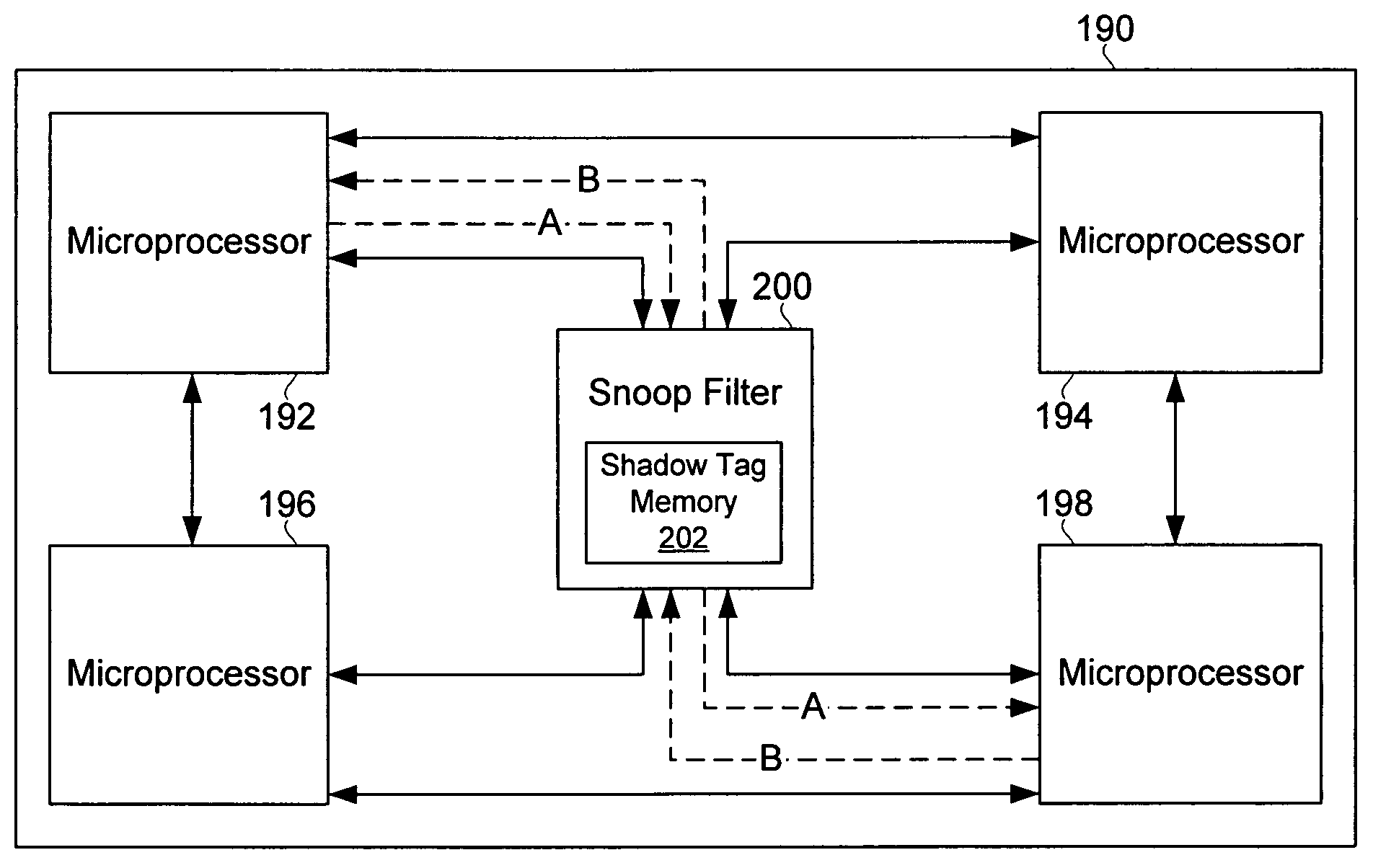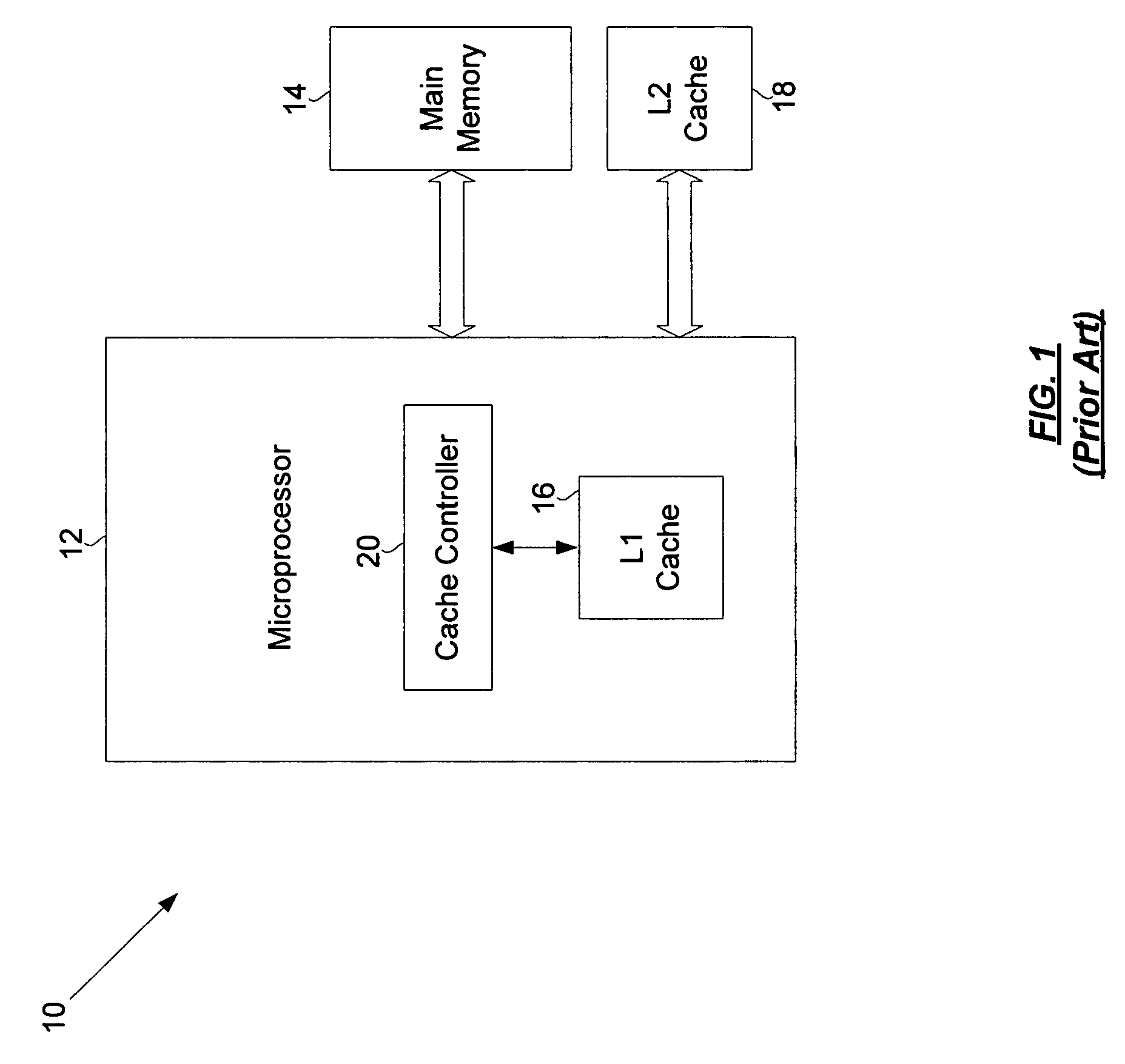Conservative shadow cache support in a point-to-point connected multiprocessing node
a multi-processing node, conservative technology, applied in the direction of instruments, computing, electric digital data processing, etc., can solve problems such as bottlenecks
- Summary
- Abstract
- Description
- Claims
- Application Information
AI Technical Summary
Benefits of technology
Problems solved by technology
Method used
Image
Examples
Embodiment Construction
[0026]In a SMP computer system, such as that shown in FIG. 3, each microprocessor has its own cache memory (see discussion of cache memories above with reference to FIG. 1). Thus, because a particular cache memory data item acted upon by one microprocessor may cause the copy of that data item to differ from other copies of that data item stored in the cache memories of the various microprocessors in a SMP computer system, “cache-coherency” techniques are implemented to ensure that the local cache memory of each microprocessor is consistent with respect to values that are stored in the cache memories of other microprocessors in the SMP computer system.
[0027]Cache-coherence problems arise in SMP computer systems when more than one microprocessor cache memory holds a copy of a data item. One type of cache-coherency technique known and referred to as a “snooping” relies on all cache memories to monitor a common network (e.g., a bus) that connects microprocessors to memory. In other word...
PUM
 Login to View More
Login to View More Abstract
Description
Claims
Application Information
 Login to View More
Login to View More - R&D
- Intellectual Property
- Life Sciences
- Materials
- Tech Scout
- Unparalleled Data Quality
- Higher Quality Content
- 60% Fewer Hallucinations
Browse by: Latest US Patents, China's latest patents, Technical Efficacy Thesaurus, Application Domain, Technology Topic, Popular Technical Reports.
© 2025 PatSnap. All rights reserved.Legal|Privacy policy|Modern Slavery Act Transparency Statement|Sitemap|About US| Contact US: help@patsnap.com



